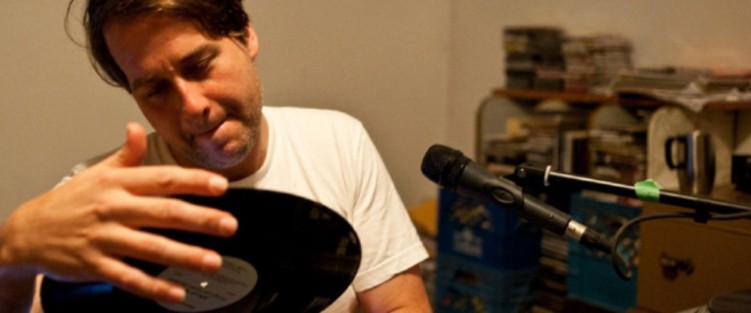 After being cancelled in 2020 due to the pandemic, the Kitchener-Waterloo based Open Ears Festival of Music and Sound returned June 3-6 this year with a full online program of both free and ticketed events, featuring performances, artist interviews, and radio broadcasts.
After being cancelled in 2020 due to the pandemic, the Kitchener-Waterloo based Open Ears Festival of Music and Sound returned June 3-6 this year with a full online program of both free and ticketed events, featuring performances, artist interviews, and radio broadcasts.
I attended the Soundscape Workshop that took place for one hour each day, run by Andrew O’Connor, an independent radio producer and sound artist. There were around ten participants, and on Sunday, June 6, the pieces made during the workshop were shared as part of a live festival broadcast. (The piece I made can be found here.) O’Connor provided some of his own field recordings of different bird calls, church bells, rain and footsteps in gravel, among others, for participants to work with. He also gave an overview of Audacity, a free open-source audio editing software, as well as the basics of microphones and recording techniques.
I had the chance to speak with O’Connor a week after the festival, and he elaborated on the Soundscape Workshop and his own relationship with sound art and listening. A soundscape – a term attributed to urban planning academic Michael Southworth and later popularized by composer R. Murray Schafer – is a sonic environment, similar to how a landscape is a visual environment. Each day the workshop ended with an example – works by Hildegard Westerkamp and R. Murray Schafer, as well as one of O’Connor’s own pieces. Pauline Oliveros’ Ted Talk was also shared with the participants.
O’Connor stressed that these are not new ideas. “Listening and being in tune with your surroundings has always been crucial to existence, and it still is,” he says. We live our lives surrounded by specific collections of sounds, many of which we might tune out. The sonic profile of a place gives it a sense of acoustic identity, so working with the concept of soundscape by using field recordings and creative sound design can yield very striking artistic results.
“The really specific sounds that we know [...] immediately evoke something,” says O’Connor. “It’s a very personal thing what they evoke – it could be banal, it could be incredibly significant. It all depends on the ears that are receiving it. But when you really get into the specific and the personal, you tell a much larger and broader story that I think resonates with a lot more people.”
“I use the word story in a very broad sense,” he adds. “Not necessarily the traditional idea of a story [with] a beginning, middle, and end where everything comes to a resolution, but more just movement and emotion is really what I mean by story. Having that present in your work is critical.”
He first got introduced to soundscapes and sound art through CKMS FM, University of Waterloo’s campus radio station, where he began volunteering as a programmer in high school. “Community radio was still analog, so I learned how to edit on reel to reel tape machines cutting and splicing” he explains. For O’Connor, learning how to make a tape loop was “one of those lightbulb moments” that has led to a lifetime of sound exploration.
The participants who attend O’Connor’s workshops come from all sorts of artistic backgrounds: students, visual artists, sculptors, musicians, composers, and sound artists. He tailors the content to best match whoever shows up. “The workshop is really trying to connect those dots and lead you (...) to explore these ideas yourself in your own work, whatever that work may be in the end.”
Often there can be some hesitation from music institutions about how to approach sound art, since it isn’t easily categorizable and its artistic applications are so varied. “Something that I love about Open Ears is that since inception it’s really been about ignoring those lines and just presenting music and sound – not worrying about genre and idiom and what this is called,” O’Connor says. The Open Ears Festival started in 1998 and “innovation and disruption” are listed as core values on their website.
When I ask how someone might start exploring soundscape and field recording, O’Connor acknowledges that it’s something that takes time, practice, and focus – but that many resources and tools for working with recordings, like Audacity, are relatively accessible. “Just start doing it – you’re not going to be a master at first, but the tools are out there,” he says. “Get your phone, make some recordings and start playing around!” O’Connor also teaches workshops on pirate radio, either separately or as a component of his soundscape workshops. He runs DISCO 3000 and Parkdale Pirate Radio, both broadcast live and streamable online.
As part of Open Ears, O’Connor’s workshop offered a hands-on way for participants to explore the creative possibilities offered by field recording and soundscape composition. With an expansive approach to music programming and an emphasis on community, the festival’s inclusion of an event that brought attendees to the table as music creators themselves was a very meaningful addition. The festival alternates yearly between a full lineup and a scaled back version – the 2022 season is already scheduled for June 2-5 next year, so be sure to stay tuned for more details.
And for those looking to expand how they listen to the spaces they’re in, O’Connor says that being aware of the sounds that make up your surroundings is the best way to start. “Really tuning in your world...being aware of how you respond to that and how it affects you and taking that awareness further into really engaging with sound art and soundscape. I don’t really like to pinpoint it and say ‘listen to this or listen to that.’ Just listen! Just listen and follow where that leads.”
Open Ears Festival of Music and Sound ran online from June 3 to 6, 2021. Readers are welcome to reach out to O’Connor over email (aoconnor88@hotmail.com) or on Twitter @parkdalepirateradio for any inquiries about soundscape/radio broadcasting workshops or questions about either practice.
Camille Kiku Belair is a Toronto based classical guitarist, composer and writer. They are currently pursuing an MFA in Composition and Experimental Sound Practices at California Institute of the Arts.



